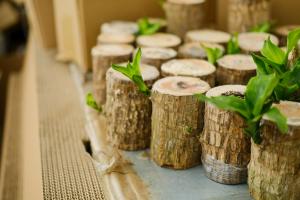How Deep to Plant Hydrangea Tree
Hydrangea trees are a popular choice for gardeners and landscapers looking to add beauty and color to their yard. These trees are typically easy to care for and can thrive in a variety of climates. One of the most important aspects of planting a hydrangea tree is ensuring that it is planted at the proper depth. In this article, we will explore how deep to plant a hydrangea tree and provide some tips for ensuring its success.
Understanding the Hydrangea Tree
Before discussing planting depth, it is important to understand a few things about the hydrangea tree. These trees are typically grown from cuttings or grafts and can take several years to reach maturity. They are known for their large showy flowers, which range in color from pink to blue to white depending on the soil pH. Hydrangea trees prefer well-drained soil and may require regular watering in hot, dry weather.
Planting Depth for Hydrangea Trees
When planting a hydrangea tree, the most important thing to remember is to plant it at the same level it was growing in the container or pot. This means that the top of the root ball should be level with the surrounding soil. Planting too deep or too shallow can cause the tree to struggle and may even result in its death.
Before planting, it is a good idea to water the tree well and allow it to soak for a few hours. This will help to ensure that the roots are moist and ready to establish themselves in the ground. Dig a hole that is twice as wide as the root ball and deep enough so that the tree can be planted at the proper depth. Gently tease the roots apart and remove any damaged or dead ones before placing the tree in the hole.
Backfill the hole with soil and gently pat it down around the base of the tree. Water it well and add a layer of mulch around the base to help retain moisture and prevent weed growth. It is important to avoid covering the base of the tree with mulch, as this can promote rot and other diseases.
Tips for Success
Planting a hydrangea tree at the proper depth is a key factor in its success, but there are a few other things to keep in mind. Here are some tips to help ensure that your tree thrives:
Water regularly. Hydrangea trees require regular watering, especially during hot, dry weather. Make sure the soil around the tree stays moist but not waterlogged.
Fertilize occasionally. You can fertilize your hydrangea tree with a balanced fertilizer once a year in the spring. Avoid over-fertilizing, as this can damage the tree.
Prune carefully. Hydrangea trees require some pruning to maintain their shape and health, but be careful not to overdo it. Prune in the spring and only remove dead or diseased branches.
Watch for pests and diseases. Hydrangea trees can fall victim to a variety of pests and diseases, including powdery mildew and spider mites. Regularly inspect your tree for signs of trouble and address any issues promptly.
By following these tips and planting your hydrangea tree at the proper depth, you can help ensure its success and enjoy its beautiful blooms for years to come.

 how many times do yo...
how many times do yo... how many planted tre...
how many planted tre... how many pine trees ...
how many pine trees ... how many pecan trees...
how many pecan trees... how many plants comp...
how many plants comp... how many plants can ...
how many plants can ... how many plants and ...
how many plants and ... how many pepper plan...
how many pepper plan...






























